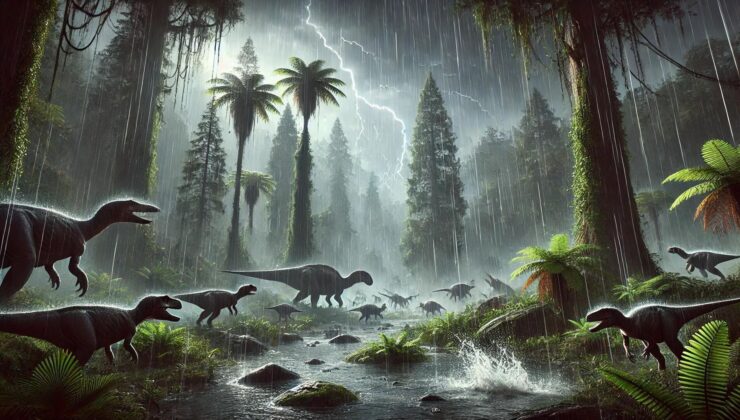Ancient T-rexin Ancestor Discovered: 86 Million-Year-Old Dragon Prince Fossils Rewrite Evolutionary History
Groundbreaking Paleontological Discovery in Mongolia
In a remarkable breakthrough within the scientific community, researchers in Mongolia have identified a previously unknown dinosaur species that is believed to be the evolutionary precursor to the iconic Tyrannosaurus rex. The fossils, dating back approximately 86 million years, have shed new light on the origins and development of the mighty predatory dinosaurs.
This newly recognized species has been named Khankhuuluu mongoliensis, translating to ‘Mongolian Dragon Prince’. These fossils, initially discovered and preserved in a museum collection during the early 1970s, were long thought to belong to the species Alectrosaurus. Recent detailed analyses, however, revealed distinctive features indicating that they represent a distinct, primitive lineage closely related to the T-rex family.
The fossils exhibit a combination of primitive traits and more advanced characteristics typical of later tyrannosaurids, suggesting that Khankhuuluu mongoliensis occupied a pivotal position in dinosaur evolution. Expert paleontologists estimate that this medium-sized predator weighed around 750 kilograms and was highly agile, capable of swift pursuits in its environment. Its physical features hint at a possible role as an ‘evolutionary bridge’ connecting earlier predatory dinosaurs to the formidable T-rex and its relatives.
Implications for Dinosaur Evolution
The significance of this discovery has been published in the esteemed journal Nature. Paleontologists from the University of Calgary in Canada have noted that specific anatomical features of the nasal bones resemble early stages of the powerful jaw musculature seen in T-rex. This lends weight to the theory that Khankhuuluu mongoliensis represents an ancestral form that contributed to the development of the T-rex’s remarkable bite force.
The name ‘prince‘ reflects its status as one of the earliest known members of the tyrannosaurid lineage, highlighting its role as a foundational ancestor. Tyrannosaurids, recognized as a family of bipedal carnivorous dinosaurs, are known for their impressive hunting capabilities and formidable skulls.
Insights from Paleontological Experts
Jared Voris, a doctoral student and one of the leading researchers involved, stated: “These dinosaurs were small, agile predators that thrived in the shadows of larger, dominant species. Our findings reveal that before ascending to dominance, tyrannosaurs were once swift, cunning hunters—princes before they became kings.”
Migration and Evolutionary Pathways
The study also suggests that tyrannosaur ancestors migrated between North America and Asia via land bridges connecting Siberia and Alaska. This migration facilitated regional invasions and hindered the early evolution of tyrannosaur groups, contributing to their widespread distribution. Voris emphasized that with this discovery, ‘tyrannosaurs proved to be princes before they became kings.’
Conclusion: A New Chapter in Dinosaur History
The uncovering of Khankhuuluu mongoliensis marks a significant milestone in paleontology, providing valuable insights into the origins of one of the most formidable predators to have ever existed. This discovery will undoubtedly influence future research into the evolutionary trajectory from primitive predatory dinosaurs to the apex carnivores like T-rex we admire today.
This article was created, translated, and reviewed with the support of artificial intelligence by an editor or author. For further information, please see our Terms and Conditions. Vezir Agency
 02:00
02:00


